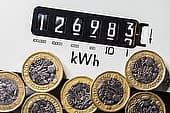Home > Energy > News > August electricity switches down compared to 2019
August electricity switches down compared to 2019
Around 470,000 households switched their electricity supply in August 2020, less than the previous month and the same month in 2019.
Figures from Energy UK show 17% fewer customers switched their electricity supply in August 2020 compared to August 2019.
It means almost four million customers have switched from one suppler to another in 2020, a 5% reduction from where we were last year.
In other news, two challenger suppliers Bulb and Igloo have confirmed price rises coming into force in October.

Switching numbers
Electricity switching figures have fluctuated in 2020 due to the uncertainty around the coronavirus crisis, but figures for August are only down 17% compared to last year.
In April, data showed switching was down 29% year-on-year, and although it has since picked up again, switching behaviour is still 5% lower in 2020 than it was during the record-breaking 2019.
March was the first month where switching was affected by the coronavirus outbreak with figures 4.3% lower year-on-year.
Since then, switching rates have been unpredictable, although the trends still show customers are moving away from the big suppliers.
Challengers gaining ground
Small and mid-tier energy suppliers experienced a net gain of 33% in August, attracting over 156,000 customers more than they lost to larger providers.
This continues the trend we've seen over several years as customers move away from the major suppliers and choose the cheaper deals often offered by challengers.
So far in 2020 almost 1.5 million customers have switched from large suppliers to small or mid-tier ones while only 530,000 have moved in the opposite direction.
This suggests customers are still looking for cheaper deals when they compare energy prices and don't necessarily make their choice based on the brand recognition of a larger energy provider.
Research from Ofgem and Citizens Advice released in March 2020 found that better tariffs are the most common reason for customers to switch.
Price increases
In related news, challenger suppliers Bulb and Igloo Energy have announced the price rises they will be levying on customers from October onwards.
Bulb customers will pay an average of 5.3% more on their Vari-Fair tariff, made up by rises in electricity wholesale prices and network costs. Gas wholesale prices have fallen slightly, but all dual fuel customers will pay more.
After these rises, Bulb say their Vari-Fair tariff will still be £76 below the default price cap which was set at £1,042 in August and will come into force in October.
Bulb's average prices came down by £56 in April, putting their tariff £218 below the energy price cap.
Back in 2019, Bulb were involved in a public row with SSE when they accused larger suppliers of using the energy price cap as a target rather than a limit.
Read our full guide to Bulb to find out more about what they offer.
Meanwhile, Igloo Energy customers will see an average rise of 10.9% on their bills, although the supplier still says their prices are 14% cheaper than the price cap.
When we recently analysed the best prices offered by green and non-green energy providers, Igloo's tariff was in the top four - albeit in the non-green category.
Part of the problem for both Bulb and Igloo is that they strive for simplicity by offering only one tariff to their customers - Vari-Fair by Bulb and Pioneer by Igloo.
This means they don't offer better deals to customers who sign up for fixed deals, and when wholesale and network prices rise, their only tariff rises in response.
One of the positives, however, is that neither provider charges exit fees on their only tariff, so customers unhappy with the increases can shop around and switch immediately.
Get insider tips and the latest offers in our newsletter

We are independent of all of the products and services we compare.

We order our comparison tables by price or feature and never by referral revenue.

We donate at least 5% of our profits to charity, and we have a climate positive workforce.
Latest News

02 January 2024
Energy prices increase by 5%
23 November 2023
Energy price cap to rise 5% in January 2024
24 October 2023
Energy companies must do more to support customersGet insider tips and the latest offers in our newsletter


